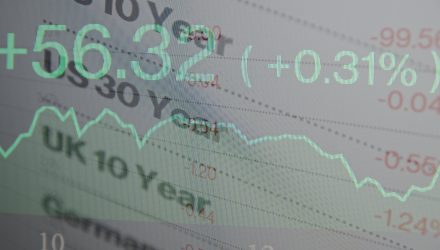The capital markets are definitely keeping a watchful eye on the 2-year and 10-year yield curve, which briefly inverted during Wednesday’s market session. An inverted yield curve is of particular interest as a tried-and-true recession indicator.
“The US equity market is on borrowed time after the yield curve inverts. However, after an initial post-inversion dip, the S&P 500 can rally meaningfully prior to a bigger US recession related drawdown,” wrote Bank of America technical strategist Stephen Suttmeier.
Just how accurate has an inverted yield curve been in the past? Suttmeier pointed out that it’s more of an early warning sign as opposed to a clear cut signal a recession is forthcoming.
“While yield curve inversions can be a leading indicator of economic weakness or recession, they are an early warning sign,” he added. “Going back to 1956 it has taken between eight (1959) and 24 months (1967) for a US recession to start after a yield curve inversion.”
As market volatility is reigning, it’s still necessary to get fixed income exposure despite what the yield curve is doing. As such, there are fixed income exchange-traded fund (ETF) options.
An article in Investing Daily says, “Fixed income securities are appropriate for anyone that relies on investment income for any purpose, and who must minimize risks to capital. This is distinct from those who are attempting to build their wealth over time, in which case they would want to invest in more aggressive securities.”
It’s easy to overlook bonds as opposed to equities given their more static returns in nature as opposed to the more dynamic stocks that can move and shake when markets are roaring, as well as vice versa. While bonds may not be ideal for the adrenalin-fueled investor, they can still gain that much-needed fixed income exposure via exchange-traded funds.
As far as bonds not making money compared to U.S. equities, one can only look to the Bloomberg Barclays Aggregate Bond Index, which has been up every calendar year dating back to 1976. Furthermore, it experiences losses in only three of the last 42 years.
Lastly, bonds are ideal for every investor—retired or not. Fixed income provides a buffer against stock market volatility by being a safe haven asset, particularly when market drawdowns occur.
Investment-grade corporate bond-focused fixed-income ETF options include the iShares Intermediate Credit Bond ETF (NASDAQ: CIU), iShares iBoxx $ Invmt Grade Corp Bd ETF (NYSEArca: LQD) and Vanguard Interm-Term Corp Bd ETF (NASDAQ: VCIT). Investors looking for broad-based core bond exposure can look to a fund like the iShares Core US Aggregate Bond ETF (NYSEArca: AGG).
For more market trends, visit ETF Trends and to access up-to-date data on ETFs, visit ETFdb.com.

